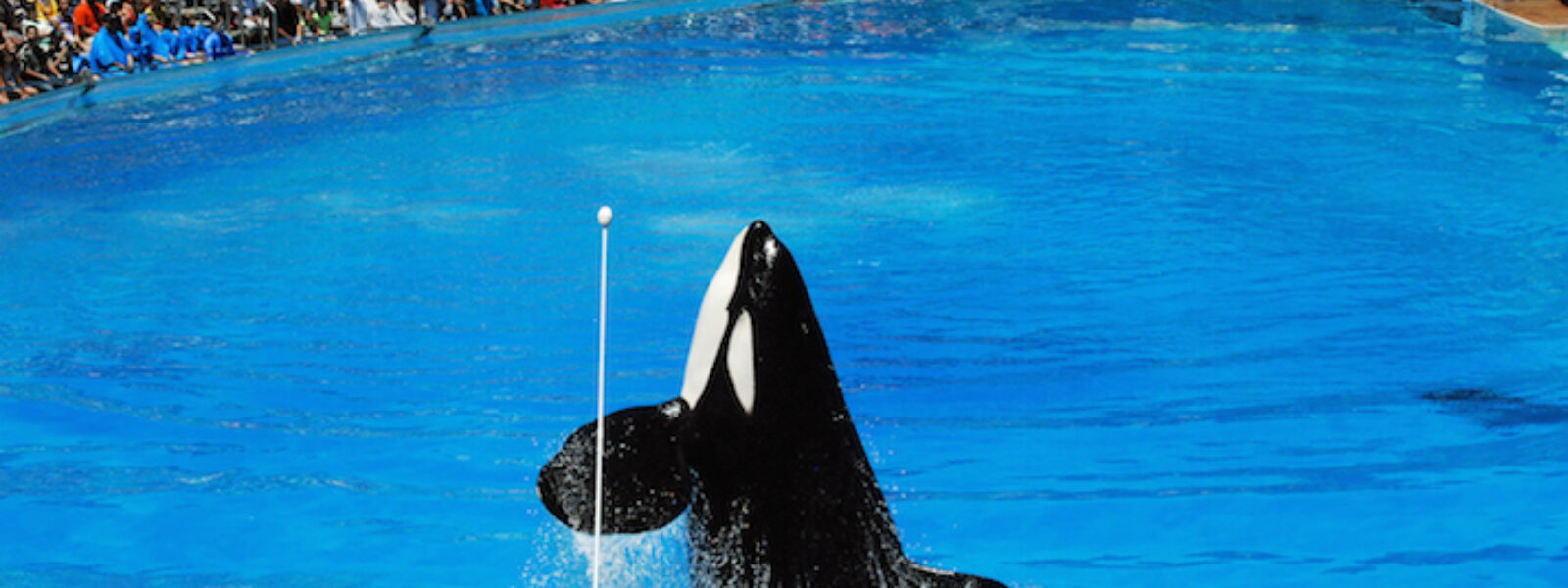

Today, SeaWorld announced an immediate end to the breeding of orcas at all their captive facilities. In the words of SeaWorld’s President and CEO Joel Manby, this will be “the last generation of orcas in SeaWorld’s care”. This is an important step toward ending orca whale suffering and the inhumane treatment of captive orcas.
Earth Island’s International Marine Mammal Project has been working to stop the capture, trade, and captivity of dolphins and whales for more than thirty years. Today’s announcement is long overdue recognition by SeaWorld that keeping whales in captivity is cruel and abusive and must end.
There has been a dramatic change in public attitudes about capturing and holding whales and dolphins for captive entertainment. Movies like “Free Willy”, “The Cove”, and “Blackfish” have all had a tremendous impact. They have helped educate a generation of people about how scientifically and ethically wrong it is for whales and dolphin to be confined in captivity doing circus tricks. People around the world are rightfully demanding change.
SeaWorld’s attendance has dropped precipitously and shareholders have pounded the stock price. Legislation and lawsuits call for SeaWorld to reform. CEO Manby failed to mention two lawsuits Earth Island has been supporting against SeaWorld’s captive program. These lawsuits include our intervention to support the California Coastal Commission ban on trade and breeding of captive orcas, and a lawsuit contending that SeaWorld uses false and deceptive advertising and unfair business practices by making untrue claims about orcas in captivity.
Even after SeaWorld’s new step, more change is needed. Their announcement does not end the threat that SeaWorld and other captive facilities pose to dolphins and whales. Dolphins, belugas, and orcas continue to be captured around the world for suffering lives in captivity.
Even at SeaWorld, their plan fails to address a number of threats to dolphins and whales.
SeaWorld intends to keep all 24 orcas, including young ones, in their concrete tank facilities for the rest of their lives. This would mean orca captivity will continue for decades. This is unacceptable.
SeaWorld’s claim to ban breeding also bears examination. If female orcas are not kept entirely segregated from males there may be breeding that SeaWorld would account for as "accidental" and continue to produce new captive orcas.
Regrettably, SeaWorld has refused to undertake any retirement of captive orcas to seaside sanctuaries where they could retire without the stresses and damaging impacts of life in tanks.
SeaWorld CEO Manby, rationalizing why SeaWorldwould never release orcas from concrete tanks, took an absurd swipe at the effort to rescue the whale Keiko from the movie “Free Willy”. Manby claimed that the program was a failure because Keiko was unable to be reunited with his family in the wild, and that SeaWorld wouldn’t return orcas to ocean waters because they would die.
In fact, Keiko was rescued from near death in Mexico and after 2 year of rehabilitation in Oregon, lived successfully for 5 years in ocean sea pens in Iceland and Norway including times in which he successfully swam with wild whales. 17 orca whales died in captivity during the time that Keiko was thriving in an ocean sea pen environment.
Taking the least healthy captive orca whale in the world and bringing him back to full health, bringing him to a sea pen environment and having him live to be the 2nd oldest captive male orca worldwide was in fact a great success.
Since it was before his tenure, Manby was probably unaware that SeaWorld had the opportunity to rescue Keiko from Mexico and bring him to one of their facilities. But SeaWorld turned their back on Keiko, determining that it was better to let him die in Mexico than come to SeaWorld, where his skin virus could potentially affect their other orcas.
Certainly the captive-born orcas at SeaWorld cannot be released to the open ocean. But the premise that the orcas at SeaWorld cannot safely and successfully live in a seaside sea-pen sanctuary is ludicrous. Sea pen retirement sanctuaries are a far more healthy, safe, and humane environment than lives in concrete tanks will ever be.
Finally, SeaWorld has refused to make any provisions for captive dolphins or other cetaceans, like belugas and pilot whales. This opens the door for possible expansion and no end to dolphin breeding, display, performance, and swim-with programs at SeaWorld facilities around the world. This is indefensible.
So, let’s all recognize the SeaWorld breeding ban as a positive step. But meanwhile, we must keep up all the vigilant efforts around the world to bring a permanent end to the sad chapter of dolphins and whales in captivity.